Skier sur de la neige artificielle, c'est un tout autre jeu. Elle est plus glacée, plus dense et plus glissante que la neige naturelle, ce qui signifie que votre équipement doit être à la hauteur. Des skis longs et lourds conçus pour la poudre naturelle ? Ils peuvent sembler encombrants et difficiles à contrôler ici. La solution ? Des skis plus courts et plus légers comme les produits Snowfeet qui vous offrent une meilleure accroche, un meilleur contrôle et une meilleure stabilité sur ces surfaces lisses et artificielles.
Points clés :
- La neige artificielle est plus dure, plus glacée et plus compacte que la neige naturelle, ce qui la rend plus difficile à skier.
- Des skis plus courts (comme les Skiblades Snowfeet ou les Skiskates) offrent un meilleur contrôle et des transitions rapides sur les carres, idéales pour la neige artificielle.
- Des matériaux durables (carres métalliques, renfort en fibre de verre) sont essentiels car la neige artificielle use plus rapidement le matériel.
- Des designs légers et portables réduisent la fatigue et rendent le ski plus fluide.
Si vous skiez principalement sur de la neige artificielle, abandonnez les skis longs et traditionnels. Optez pour des options plus courtes et agiles conçues pour les surfaces glacées et compactes. Les Skiblades et Skiskates Snowfeet sont d'excellents choix, offrant un contrôle facile et une durabilité adaptée à ces conditions. Voyons pourquoi c'est important et comment choisir le bon équipement.
Revue de la piste de ski artificielle : COPENHILL

Facteurs clés pour choisir des skis pour la neige artificielle
Quand il s'agit de skier sur de la neige artificielle, choisir le bon équipement peut tout changer. Contrairement à la neige naturelle, la neige artificielle a tendance à être plus dense et glacée, ce qui peut poser problème aux skis traditionnels. C'est là que les Skiblades Snowfeet* (65-120 cm) et les Skiskates (44 cm) brillent - ils sont spécialement conçus pour gérer ces conditions délicates. Décomposons pourquoi des facteurs comme la longueur, le matériau et le design font de Snowfeet* un choix exceptionnel.
Longueur et contrôle des skis
Les skis plus courts changent la donne pour naviguer sur les surfaces dures et glacées de la neige artificielle. Ils permettent des transitions de carres plus rapides et des mouvements plus précis, ce qui est crucial pour garder le contrôle. Les modèles Snowfeet* excellent dans ce domaine - les longueurs plus courtes (65-85 cm) offrent une maniabilité incroyable, tandis que les options plus longues (90-120 cm) sont parfaites pour un carving fluide. Que vous débutiez ou soyez un skieur expérimenté, Snowfeet* vous donne le contrôle nécessaire pour vous adapter au terrain en constante évolution de la neige artificielle.
Matériau et solidité des carres
La neige artificielle est dure pour les skis - elle est abrasive et peut user les carres beaucoup plus vite que la neige naturelle. Par exemple, des carres qui pourraient durer dix jours sur neige naturelle ne tiendraient qu'environ la moitié de ce temps sur des surfaces artificielles. C'est pourquoi les produits Snowfeet* sont conçus pour être robustes. Ils disposent d'un renforcement en fibre de verre et de carres métalliques pour gérer l'usure supplémentaire. Les Skiskates Snowfeet*, en particulier, sont fabriqués en bois durable avec des carres métalliques, leur conférant un design résistant à l'eau et aux dommages causés par la glace.
Design léger et portable
Skier sur de la neige artificielle signifie souvent des ajustements rapides et un mouvement constant, donc avoir un équipement léger est un énorme avantage. Les produits Snowfeet* ne sont pas seulement légers mais aussi incroyablement portables - ils sont assez petits pour tenir dans un sac à dos, ce que l'on ne peut pas dire des skis traditionnels. Avec leur taille compacte et leur design réactif, les Skiskates Snowfeet* (seulement 44 cm ou 17 pouces de long) sont parfaits pour les pistes, les snowparks ou partout où vos aventures hivernales vous mènent. Ils combinent portabilité et performance, vous n'avez donc pas à sacrifier le contrôle pour la commodité.
Snowfeet* vs autres marques de skis : comparaison des performances
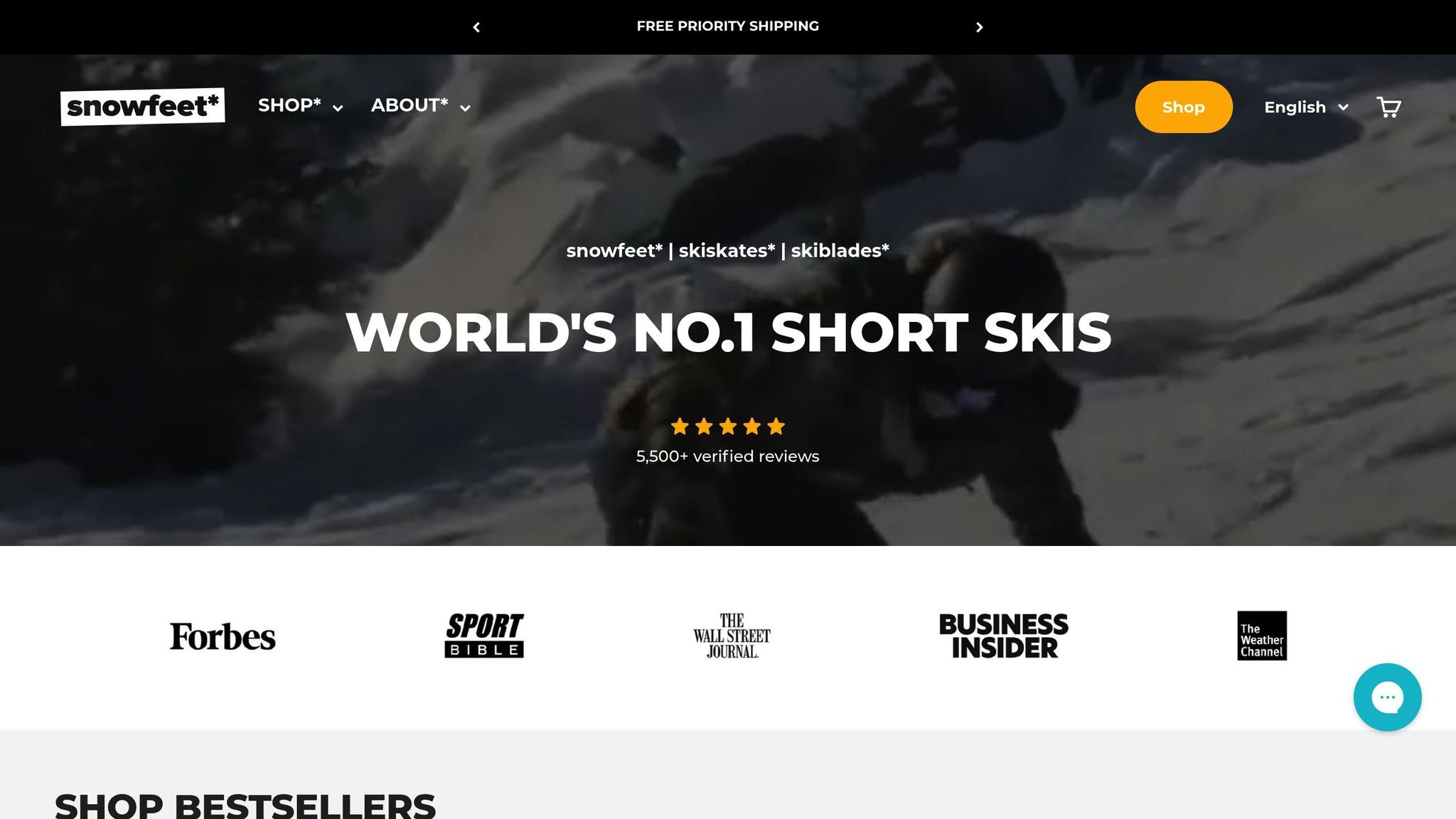
Lorsque vous cherchez du matériel pour affronter la neige artificielle, il vaut la peine d'examiner de plus près comment Snowfeet* se compare aux grandes marques de skis comme Rossignol, Atomic et Head. Les différences deviennent évidentes quand on se concentre sur ce qui compte vraiment pour les surfaces de neige artificielle. Décomposons cela.
Tableau comparatif des performances : Snowfeet* vs autres marques
| Caractéristique | Produits Snowfeet* | Marques de skis traditionnelles (par ex., Rossignol, Atomic, Head) |
|---|---|---|
| Gamme de longueurs | 44–120 cm (17–47 pouces) | 150–200+ cm (59–79+ pouces) |
| Contrôle sur la neige artificielle | Maniabilité supérieure avec des transitions rapides de carres | Moins réactif sur les surfaces glacées |
| Portabilité | Se glisse dans un sac à dos et pèse beaucoup moins | Nécessite des sacs à skis et est lourd à transporter |
| Courbe d'apprentissage | Plus facile pour les débutants avec un contrôle immédiat | Courbe d'apprentissage plus raide nécessitant plus de technique |
| Polyvalence | Excelle sur pistes damées, bosses, snowparks et sentiers de randonnée | Principalement adapté aux pistes de ski et terrains damés |
| Facteur fatigue | Un design léger réduit la fatigue des jambes | Un équipement plus lourd augmente la fatigue |
| Options de fixations | Options incluant fixations à déclenchement, non déclenchement ou fixations de snowboard | Utilise principalement des fixations de ski traditionnelles |
Pourquoi Snowfeet* est le meilleur choix pour la neige artificielle
Les produits Snowfeet* apportent un avantage unique aux conditions de neige artificielle, excellant là où les skis traditionnels montrent souvent leurs limites. Sur les surfaces dures et glacées typiques de la neige artificielle, Snowfeet* offre un contrôle et une agilité inégalés. Les transitions rapides de carre sont un jeu d’enfant, ce qui change la donne pour naviguer dans ces conditions difficiles. Alors que des marques comme Rossignol et Atomic privilégient la stabilité à haute vitesse, Snowfeet* se concentre sur la maniabilité essentielle pour la neige artificielle.
Les skis traditionnels, comme ceux de Head ou Atomic, peuvent briller dans la poudreuse profonde, mais ce n’est pas le terrain que vous rencontrerez dans les stations qui dépendent de la neige artificielle. Snowfeet* excelle sur les pistes damées, les snowparks et les surfaces compactes - des endroits où la précision et la flexibilité comptent plus que la vitesse pure.
Une autre caractéristique remarquable de Snowfeet* est sa polyvalence. Contrairement aux skis traditionnels, qui sont principalement limités aux pistes, Snowfeet* ouvre des options comme les sentiers de randonnée étroits et les zones que les skis plus longs ne peuvent pas gérer. Cette adaptabilité est particulièrement utile lorsque les conditions de neige artificielle varient dans une station.
La portabilité est un autre avantage de Snowfeet*. Leur design compact et léger signifie que vous pouvez les glisser dans un sac à dos au lieu de traîner des sacs de ski lourds. Non seulement cela facilite les déplacements, mais cela vous permet aussi de garder votre énergie pour les pistes.
Pour les débutants, Snowfeet* offre une expérience d'apprentissage plus fluide. Leur longueur plus courte et leur poids plus léger les rendent bien plus faciles à contrôler sur la neige artificielle. Les skis traditionnels, en revanche, exigent souvent des compétences plus avancées pour gérer les conditions fermes et glacées que crée la neige artificielle. Snowfeet* donne aux nouveaux skieurs la confiance nécessaire pour commencer sans se sentir dépassés.
sbb-itb-17ade95
Meilleurs produits Snowfeet* pour la neige artificielle
Les produits Snowfeet* sont conçus pour rendre votre temps sur neige artificielle aussi excitant et agréable que possible. Chaque produit est doté de caractéristiques uniques pour s'adapter à différents niveaux de compétence et styles de ski sur surfaces artificielles.
Skiskates Snowfeet* (44 cm)
Les Skiskates Snowfeet*, mesurant 44 cm (17 pouces), misent tout sur la portabilité et la précision. Ces Skiskates compacts se glissent facilement dans un sac à dos et offrent un mélange de skating et de ski - parfaits pour les conditions fermes et glacées souvent rencontrées sur les pistes artificielles.
Fabriqués avec un noyau en bois durable, des carres métalliques et des semelles en graphite, ces Skiskates sont faits à la main en Europe. Ce design réfléchi assure une excellente adhérence sur neige dure et artificielle tout en gardant l'ensemble léger, réduisant la fatigue lors d'une utilisation prolongée. Leur courte longueur les rend très réactifs, permettant des virages rapides, la conduite en arrière, des rotations et même des sauts - des manœuvres bien plus difficiles avec des skis traditionnels.
"À mon avis, Skiskates est le meilleur produit pour les pistes que nous avons développé jusqu'à présent. J'adore la facilité avec laquelle on peut skier et skater et la variété de figures que je peux réaliser sans trop d'effort et presque aucune restriction." – Zbyněk, fondateur de Snowfeet*
Les utilisateurs ont noté que même si cela peut prendre un peu de temps pour ajuster votre position, ces Skiskates sont incroyablement faciles à contrôler. Ils performent exceptionnellement bien sur neige damée et glace et sont compatibles avec des bottes de ski (tailles US 4,5–14,5) et des bottes de snowboard (tailles US 6–14,5). Pour une expérience optimale sur neige artificielle, gardez votre poids centré ou légèrement en arrière et commencez sur un terrain plat avant d'attaquer des pentes plus raides.
Si vous cherchez encore plus de polyvalence, découvrez la gamme Skiblades Snowfeet*.
Skiblades Snowfeet* (65 cm, 99 cm, 120 cm)
Les Skiblades Snowfeet* sont disponibles en trois longueurs, chacune conçue pour répondre à des besoins spécifiques pour skier sur neige artificielle. Contrairement aux skis traditionnels de marques comme Rossignol ou Atomic, ces options plus courtes misent tout sur le contrôle et l'agilité, essentiels pour les défis uniques des surfaces artificielles.
- Skiblades 65 cm : Parfaits pour le skating et les figures en snowpark. Leur agilité les rend idéaux pour les espaces restreints et les mouvements techniques. À partir de 450 $.
- Skiblades 99 cm : Une option tout-terrain polyvalente à 490 $. Ils offrent un équilibre entre stabilité et transitions rapides de carres, parfaits pour des vitesses modérées.
- Skiblades 120 cm : Conçus pour le carving à haute vitesse, ils offrent une excellente stabilité tout en restant assez compacts pour un contrôle facile. Prix : 690 $.
Tous les Skiblades sont légers et compacts, ce qui aide à réduire la fatigue - un grand avantage lorsqu'on skie sur de la neige dure et artificielle. Leur conception permet des virages rapides et serrés et crée une sensation de rollerblade sur la neige, en faisant un choix amusant et contrôlé pour naviguer dans des conditions difficiles.
Conseils pour skier sur neige artificielle
Le ski sur neige artificielle a ses particularités. Contrairement à la neige naturelle, la neige artificielle est plus dense et plus dure, ce qui conduit souvent à des conditions plus glacées. Pour gérer cette surface unique, vous devrez ajuster votre technique et préparer votre équipement. Voici comment en tirer le meilleur parti avec vos produits Snowfeet*.
Gardez vos carres affûtées
Sur neige artificielle, des carres affûtées font toute la différence. La surface compacte et glacée exige une excellente accroche pour le contrôle, surtout lors des virages ou des arrêts.
Prenez l'habitude d'entretenir régulièrement les carres métalliques de vos produits Snowfeet*. Ce processus est similaire à l'entretien des skis traditionnels et peut être réalisé à la maison avec des outils comme le kit d'affûtage Tyrolit Life de 10 pièces ou en magasin de ski. Commencez par limer les carres avec des limes en acier inoxydable, puis polissez-les avec des limes élastiques. Un étau à ski peut maintenir votre équipement Snowfeet* stable pendant l'opération, et une gomme à carres est idéale pour enlever la rouille.
Aiguisez vos carres avant le début de la saison, après qu'elles aient été endommagées, ou dès que vous remarquez une perte d'accroche. Après chaque utilisation, séchez et huilez les carres pour éviter la rouille. Avec des carres bien entretenues, vous aurez la confiance nécessaire pour adapter votre style de ski à la neige artificielle.
Affinez votre technique de ski
La neige artificielle demande une approche légèrement différente. Elle est plus glissante et moins indulgente que la neige naturelle, vous devrez donc skier avec contrôle et précision.
Concentrez-vous sur des mouvements fluides et délibérés lors des virages. Laissez les carres de votre équipement Snowfeet* accrocher la surface dure en évitant les actions rapides et agressives. Appliquez une pression constante sur vos carres pendant les virages pour rester stable. Plutôt que des virages taillés nets, visez des virages contrôlés légèrement dérapés. Cette technique fonctionne mieux sur la texture dense et uniforme de la neige artificielle.
Gardez une position centrée et restez vigilant face aux changements soudains des conditions de surface. Une fois ces ajustements maîtrisés, le bon modèle Snowfeet* peut affiner votre expérience.
Choisissez le bon équipement Snowfeet*
Choisir le bon modèle Snowfeet* peut faire une grande différence lors du ski sur neige artificielle. Chaque option offre des avantages spécifiques selon votre niveau et vos objectifs.
- Débutants : Les Snowfeet* Mini Ski Skates sont un excellent point de départ. Ils se portent avec des chaussures d'hiver classiques et offrent de bonnes performances sur des surfaces artificielles damées, avec un excellent contrôle grâce à leur longueur plus courte.
- Intermédiaires : Pour des vitesses plus élevées et une meilleure réactivité, essayez les Skiskates PRO de 44 cm. Associés à des chaussures de ski ou de snowboard, ils sont parfaits pour affronter les pistes damées.
- Skieurs traditionnels : les Skiblades sont un choix solide. Les modèles vont de 65 cm pour les figures en park à 99 cm et 120 cm pour plus de stabilité à haute vitesse sur les pistes artificielles.
La plupart des stations de ski acceptent les produits Snowfeet*, mais il est toujours judicieux de vérifier les politiques individuelles avant de partir. Restez sur les pistes artificielles damées et évitez les pentes raides ou la poudreuse profonde, car l’équipement Snowfeet* est conçu pour briller sur la neige compacte.
Avec la bonne préparation, le bon équipement et la bonne technique, skier sur la neige artificielle peut être tout aussi amusant - voire plus stimulant - que sur la neige naturelle !
Obtenez de meilleures performances sur la neige artificielle avec Snowfeet*
La neige artificielle peut être difficile à naviguer - elle est plus dense, plus glacée, et exige un équipement offrant précision, contrôle et flexibilité. C’est là que Snowfeet* intervient. Conçus spécifiquement pour ces conditions, leurs produits surpassent les skis traditionnels des grandes marques comme Rossignol, Atomic et Head.
La longueur plus courte des équipements Snowfeet* change la donne sur la neige dure et artificielle. Prenez par exemple les Skiskates de 44 cm - ils répondent rapidement, vous offrant l'agilité nécessaire. Si vous cherchez plus de stabilité sans perdre en maniabilité, leurs Skiblades (disponibles en 65, 99 et 120 cm) sont là pour vous. Ces designs plus courts facilitent le carving et le contrôle de vos mouvements, même sur les pistes glacées et dures des stations.
Ce qui distingue vraiment Snowfeet*, c’est leur construction. Avec des carres métalliques durables et un renfort en fibre de verre, ils offrent une précision de carving nette, même sur les pentes les plus glacées. De plus, leur design léger et compact les rend faciles à transporter - fini de traîner des skis encombrants.
Ne vous fiez pas seulement à notre parole - plus de 5 500 avis vérifiés confirment ces affirmations, avec une note moyenne impressionnante de 4,9 sur 5. Voici ce que quelques utilisateurs satisfaits ont dit :
"Je ne reviendrai jamais aux skis originaux." – Andrew B.
"Avec ces petits skis, on se sent beaucoup plus agile, plus rapide, et surtout – à l'aise. Pas de boucles, pas de bottes lourdes – il suffit d'attacher et de partir." – Jakub F.
Les produits Snowfeet* ne sont pas seulement performants - ils sont aussi polyvalents. Que vous soyez sur de la neige artificielle damée, en train de dévaler des snowparks, ou même d'explorer des sentiers de randonnée, ils s'adaptent à votre aventure. C’est quelque chose que les skis traditionnels ne peuvent tout simplement pas égaler.
Un conseil pour garder vos Snowfeet* au top de leur performance : cirez régulièrement la semelle. Cela vous aidera à glisser plus vite et à éviter que la neige ne colle.
Quand il s'agit de skier sur la neige artificielle, Snowfeet* se distingue comme le choix intelligent pour la performance et la polyvalence.
FAQs
Pourquoi les skis plus courts sont-ils meilleurs pour skier sur la neige artificielle comparé aux skis longs traditionnels ?
Les skis plus courts brillent sur la neige artificielle car ils sont plus faciles à manier et offrent un meilleur contrôle sur les surfaces plus dures, parfois plus glacées, typiques des conditions artificielles. Leur taille réduite facilite les virages serrés et vous aide à rester stable, surtout sur la neige plus dure et compacte caractéristique des installations artificielles.
Les produits Snowfeet, tels que les Snowfeet Skiblades (disponibles en 65 cm, 99 cm et 120 cm) et les Snowfeet Skiskates (44 cm), sont parfaits pour ces conditions. Leurs longueurs plus courtes offrent une portabilité, une précision et une performance inégalées, en faisant une alternative fantastique aux skis plus longs des marques comme Rossignol ou Atomic. Si vous voulez une expérience de ski ludique, réactive et adaptée à la neige artificielle, les skis courts sont votre meilleur choix.
Qu’est-ce qui rend les produits Snowfeet durables pour le ski sur neige artificielle ?
Les produits Snowfeet sont conçus pour répondre aux exigences difficiles de la neige artificielle, qui a tendance à être plus rugueuse et abrasive que la neige naturelle. Fabriqués avec des matériaux renforcés en fibre de verre, des carres métalliques de haute qualité et des fixations renforcées, ils sont faits pour durer. Cette attention à la durabilité signifie que Snowfeet résiste mieux à l’usure comparé aux skis traditionnels ou aux alternatives moins chères.
Ce qui distingue Snowfeet des grandes marques comme Rossignol ou Atomic, c’est leur accent sur la polyvalence et la portabilité sans compromis sur la robustesse. Que vous glissiez avec les Snowfeet Skiblades ou les Skiskates, leur construction solide garantit une performance fiable et durable même sur les surfaces plus rudes de la neige artificielle.
Comment profiter au maximum de l'expérience de ski sur neige artificielle avec l’équipement Snowfeet ?
Pour tirer le meilleur parti de vos aventures de ski sur neige artificielle avec l’équipement Snowfeet, commencez par adopter une posture équilibrée. Gardez les jambes écartées à la largeur des épaules et les genoux légèrement fléchis. Cette position vous aide à rester stable et maître de vos mouvements, ce qui est particulièrement important sur la surface plus dure et parfois plus glacée de la neige artificielle.
Répartissez votre poids de manière équilibrée, en vous penchant légèrement vers le milieu ou l'arrière de vos pieds. Utilisez des mouvements courts, semblables au patinage - pensez au patinage sur glace ou aux foulées de hockey - pour améliorer votre maniabilité. Pour que votre équipement Snowfeet reste performant, affûtez régulièrement les carres métalliques et cirez la semelle. Cela garantit une glisse plus fluide et une meilleure accroche. Et ne négligez pas la pratique du frein talon - c’est essentiel pour s’arrêter en toute sécurité et garder le contrôle.
Les produits Snowfeet, comme les Skiblades et les Skiskates, sont conçus pour la neige artificielle, offrant un contrôle incroyable, une portabilité facile et beaucoup de plaisir comparé aux skis ou snowboards traditionnels. Avec un peu de pratique et un entretien régulier, vous serez prêt à profiter pleinement de chaque descente !
Articles de blog connexes
- Skis de randonnée ou raquettes ? Choisir votre équipement hivernal pour le hors-piste
- Tableau des tailles de ski par taille [2025] : trouvez votre longueur parfaite
- Comment choisir ses skis selon les conditions de neige (poudreuse, pistes damées, glace)
- Acheter des skis pour la première fois : les 7 erreurs à éviter cette saison







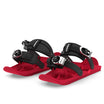
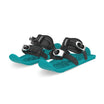












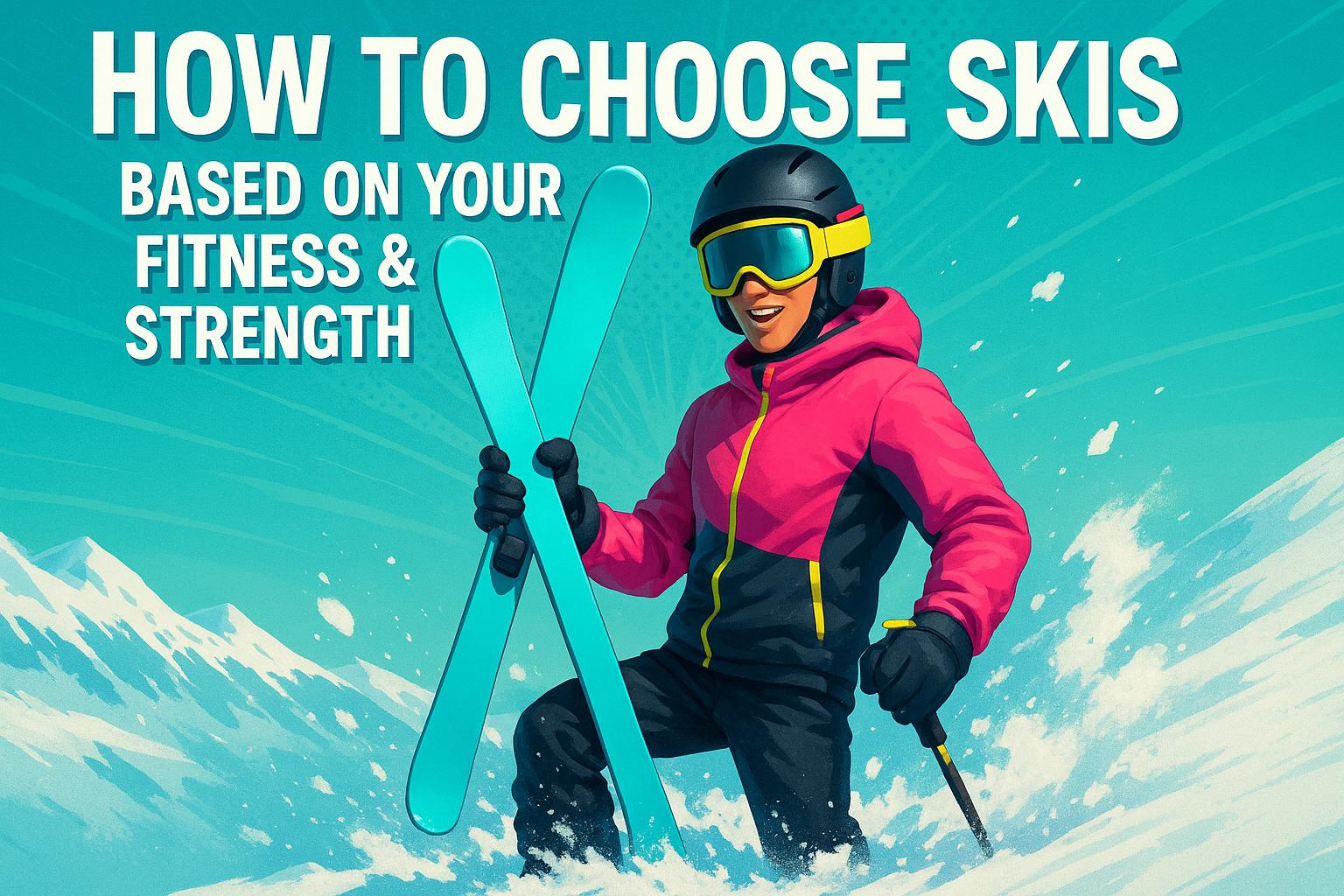
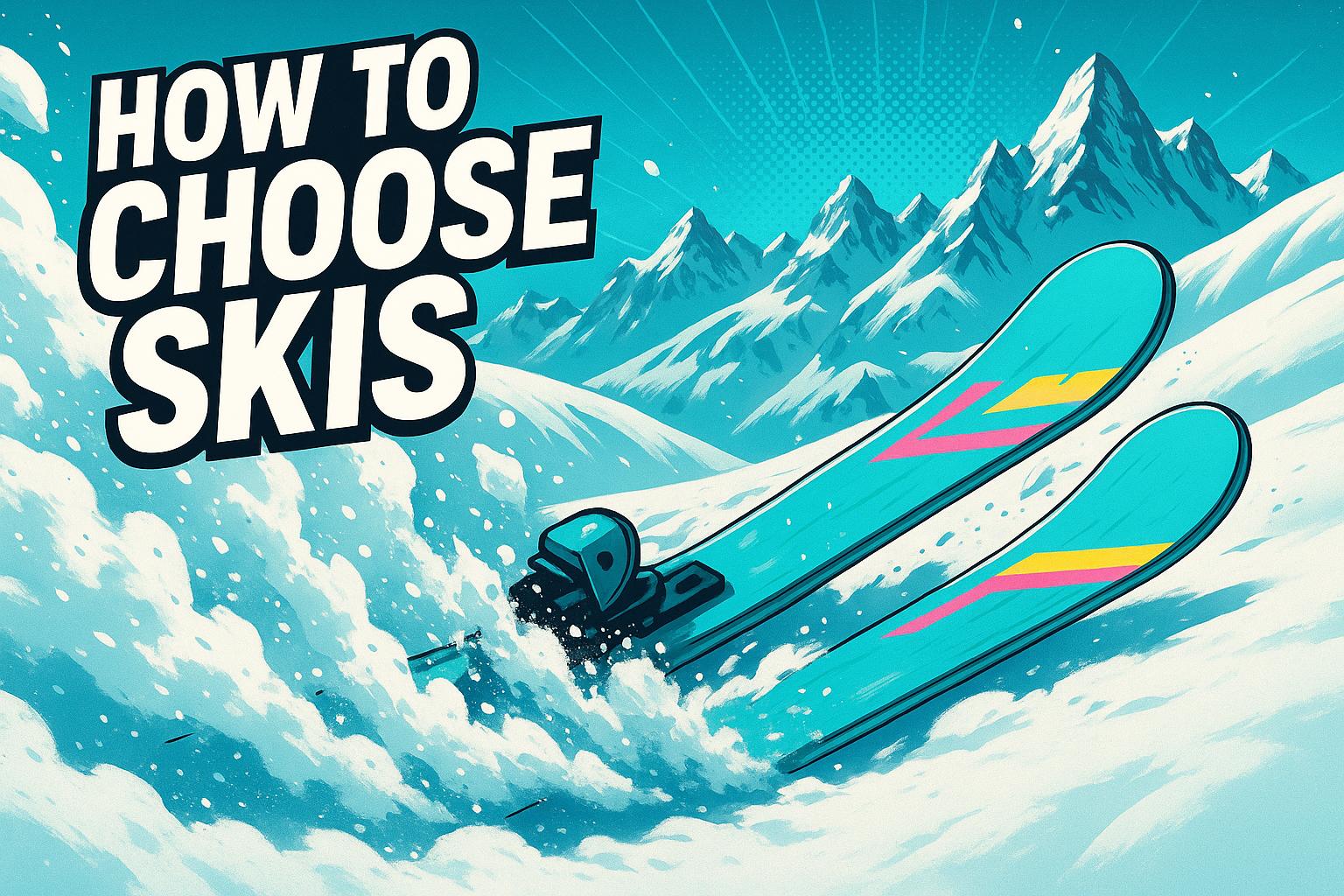




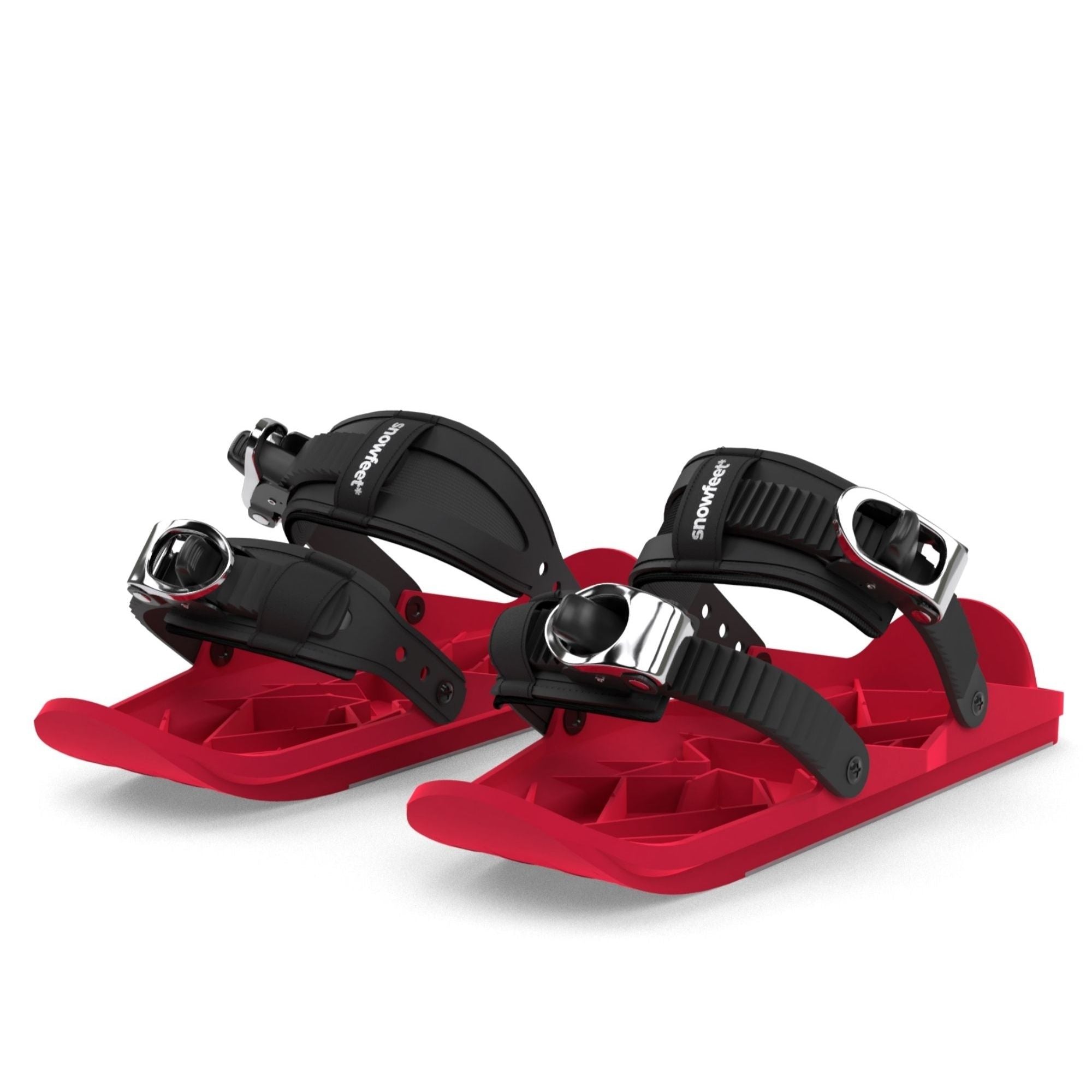
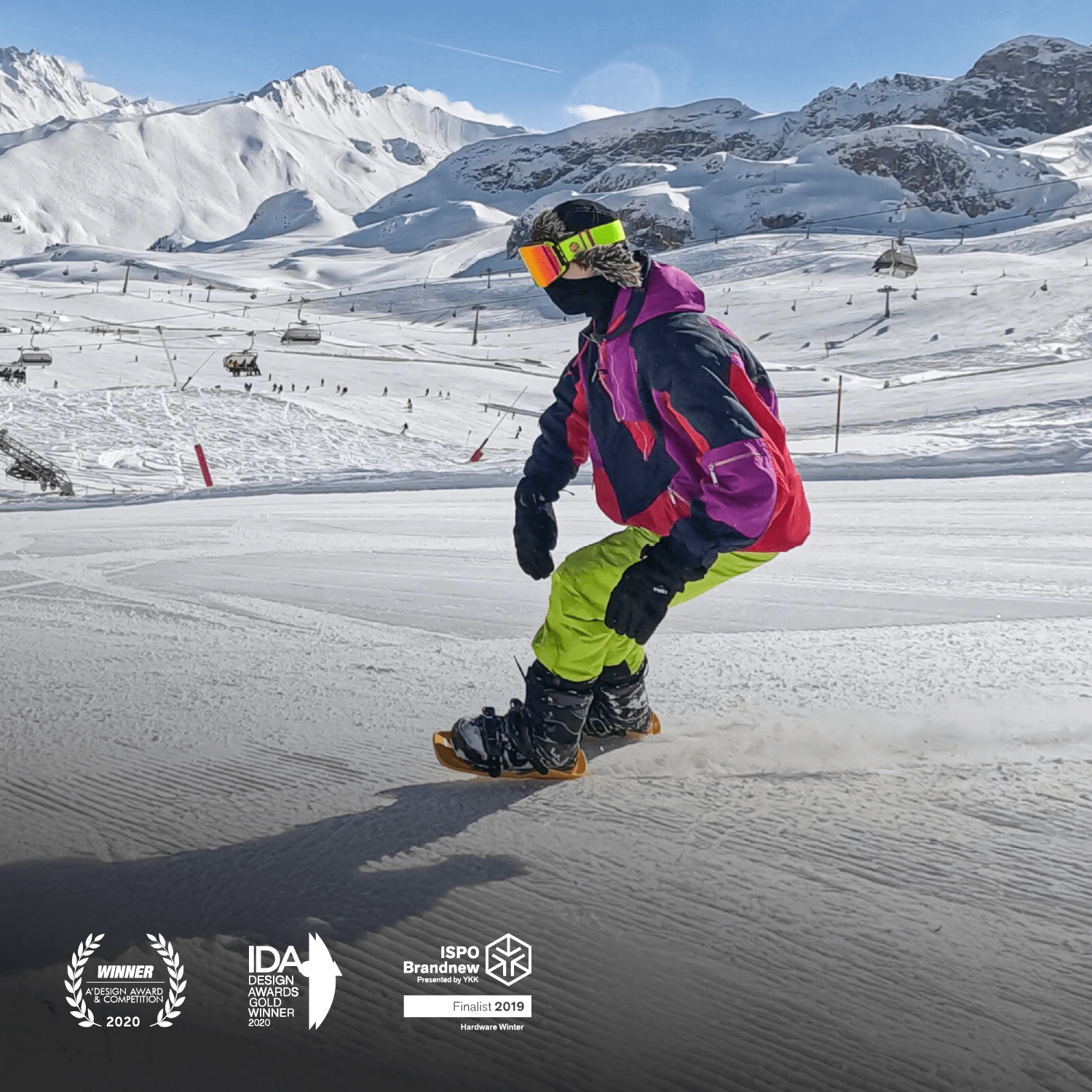




Laisser un commentaire
Ce site est protégé par hCaptcha, et la Politique de confidentialité et les Conditions de service de hCaptcha s’appliquent.